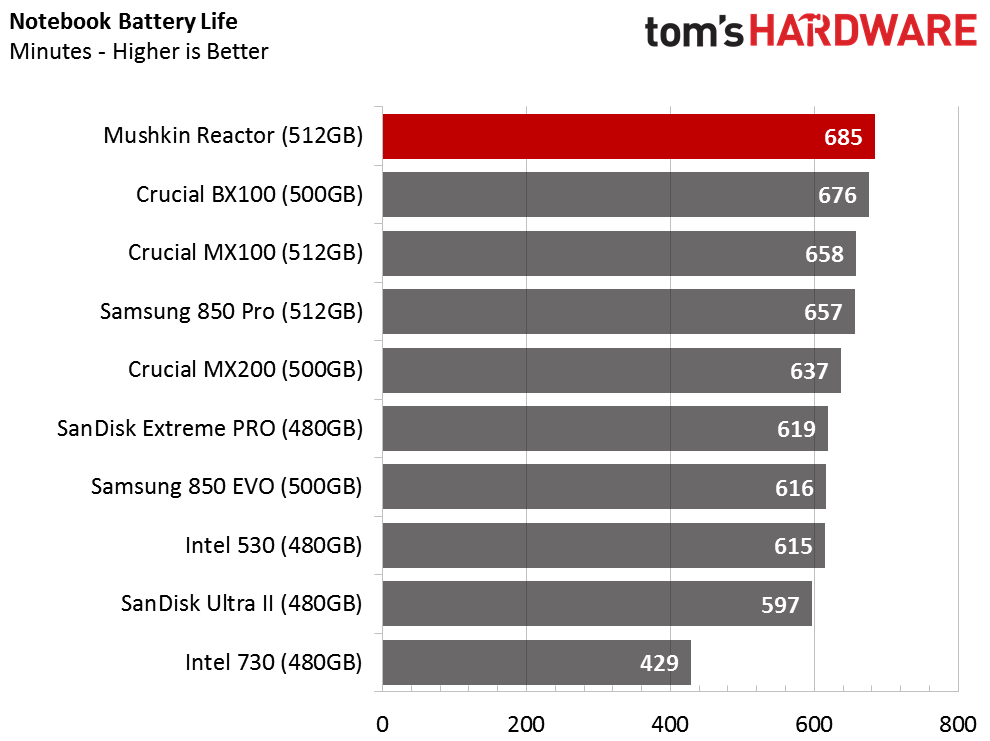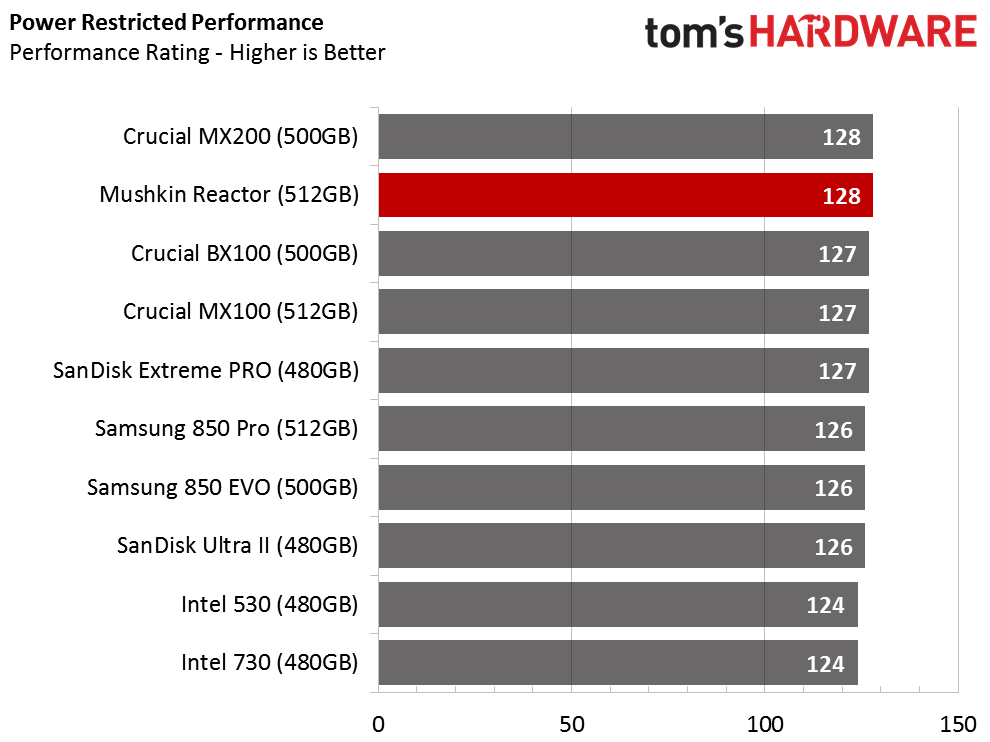Mushkin Reactor 512GB SSD Review
Mushkin's 1TB Reactor is among our Best Picks in SSDs. Today we look at the low-cost 512GB drive powered by Silicon Motion's four-channel SM2246EN.
Why you can trust Tom's Hardware
Notebook Battery Life
For more information on how we test notebook battery life, click here.
One environment where the 512GB Reactor fares well is in your notebook, running on battery power. It allows our Lenovo T440 to stay mobile longer than any other drive in our chart. This test is a corner case, sure. But when you're watching Windows' power meter tick down, it suddenly matters a lot more and the Reactor becomes the drive to own.
We're happy to report that Mushkin doesn't sacrifice performance under battery power either. All SSDs slow down somewhat, but some drives suffer more than others.
Get Tom's Hardware's best news and in-depth reviews, straight to your inbox.

Chris Ramseyer was a senior contributing editor for Tom's Hardware. He tested and reviewed consumer storage.

